History
The Esslingen railbus, sometimes shortened in German to Esslinger, had been developed during the 1950s by the Maschinenfabrik Esslingen for small branch lines and private railways. Fifty examples were built in three variants: power coaches (Triebwagen) or VT, trailer coaches (Beiwagen) or VB and driving coaches (Steuerwagen) or VS.
Of the first series, 25 VT, 6 VB and 4 VS were delivered into service, of the second series (from 1959) 6 VT, 4 VB and 5 VS.

The Forch railway is a local mixed tramway / railway line in the Swiss canton of Zürich. It is owned and operated by the Forchbahn AG, and is branded as line S18 of the Zürich S-Bahn. The standard Zürcher Verkehrsverbund (ZVV) zonal fare tariffs apply to the line.
Die Länderbahn GmbH (DLB), formerly Vogtlandbahn GmbH, is a German rail transport company based in Viechtach, operating transport services originally only in the Vogtland, but now also on a regional basis. Die Länderbahn is a subsidiary of Regentalbahn AG, which is owned by Ferrovie dello Stato subsidiary Netinera. The term vogtlandbahn remains in use as a trademark of Die Länderbahn in Vogtland.
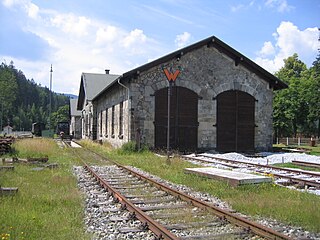
The Bavarian Localbahn Society, with its headquarters in Tegernsee, is a society that is concerned with the history of the railways in Bavaria. Localbahn means 'branch line' and is mainly used in southern Germany and Austria in lieu of the usual term Nebenbahn. The BLV's objectives are the operation of historic trains and the collection of historically valuable railway items from Bavaria.
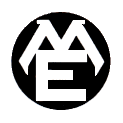
Maschinenfabrik Esslingen (ME), was a German engineering firm that manufactured locomotives, tramways, railway wagons, roll-blocks, technical equipment for the railways,, bridges, steel structures, pumps and boilers.

The Uerdingen railbus is the common term for the multiple units which were developed by the German firm of Waggonfabrik Uerdingen for the Deutsche Bundesbahn and private railways after the Second World War. These vehicles were diesel-powered, twin-axle railbuses of light construction. The diesel motors were built into the chassis underneath the vehicle. The VT 95 and VT 98 of the former Deutsche Bundesbahn in particular, are associated with this concept. These vehicles were employed in passenger train duties on branch lines where steam or diesel train operations were less profitable. Including the units built under licence, a total of 1,492 power cars were built from 1950 to 1971; and the total number of units, including trailer and driving cars, was 3,306.

The 'Hanover version' of the Wismar railbus was developed in the early 1930s as a light railbus for economical passenger services on branch lines in Germany.
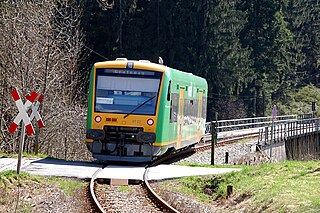
The building of the Zwiesel–Grafenau railway, today route number 906 in the timetable, was begun in 1884 by the Royal Bavarian State Railways and taken into service on 1 September 1890. With a total length of 32 km it linked the towns of Zwiesel and Grafenau in the Bavarian Forest. At Zwiesel railway station it connects to the Bavarian Forest railway from Plattling to Bayerisch Eisenstein, built by the Bavarian Ostbahn and opened on 16 September 1877, as well as the line to Bodenmais opened on 3 September 1928.

The Bavarian Forest Railway links the heart of the Bavarian Forest around Regen and Zwiesel to Plattling and the Danube valley on one side, and the Czech Republic through Bayerisch Eisenstein on the other. In the Danube valley it forms a junction with the Nuremberg–Regensburg–Passau long-distance railway and, to the south, regional lines to Landshut and Munich.
The Stadler Regio-Shuttle RS1 is the first widely used, new-generation, diesel railcar in Germany and Czech Republic for local railway services. Its most characteristic feature is the trapezium-shaped window frames. The Regio-Shuttle is classified by the Deutsche Bahn as Class 650, by the České Dráhy as Class 840 or Class 841, however numerous private railways have their own Regio-Shuttles.

The accumulator cars of Class ETA 150 were German railcares used extensively by Deutsche Bundesbahn (DB) for 40 years. They ran on both main and branch lines. By comparison with the Uerdingen railbus, the railcars were quieter, rode more smoothly on the rails owing to the weight of the batteries, and were pollution-free.

The Landshut–Rottenburg railway was a German branch line in the southern state of Bavaria. It was a stub line, about 27.5 kilometres long, from Landshut to Rottenburg an der Laaber, and was known by the locals as the Rottenburger Bockerl. Although the line is now closed, there is a plan to establish a museum railway on the remaining section from Landshut to Unterneuhausen.
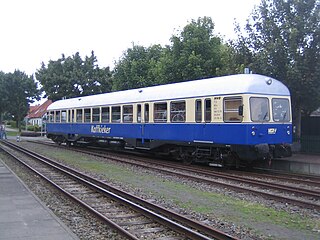
The MaK GDT is a large-volume diesel railbus that was first built in 1953 for private railways in Germany.
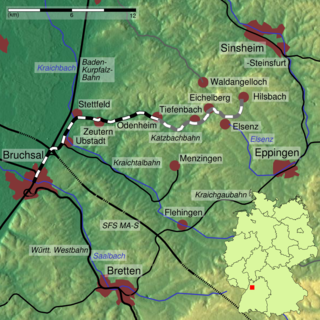
The Katzbach Railway is a branch line in southwestern Germany from Bruchsal to Odenheim that opened in 1896, and was extended in 1900 to Hilsbach. In 1960 services between Tiefenbach and Hilsbach were withdrawn, in 1975 the section between Odenheim Ost and Tiefenbach followed and, in 1986, the 600-metre-long section from Odenheim station to Odenheim Ost was closed. Since 1994 the line has been operated by the Albtal-Verkehrs-Gesellschaft (AVG), who electrified it in 1998 and integrated it into the network of the Karlsruhe Stadtbahn.

The Kaiserstuhl Railway is a railway in the German state of Baden-Württemberg. It is owned and operated by the Südwestdeutsche Verkehrs-Aktiengesellschaft (SWEG), which in turn is owned by the state of Baden-Württemberg.

ŽS series 812 was a diesel motor railbus operated by Serbian Railways. Originally it was the German Uerdingen railbus produced by Goša FOM for Yugoslav Railways (JŽ).

DR class VT 2.09 were light railcars of Deutsche Reichsbahn in the GDR. They were designed and built by Waggonbau Bautzen. In 1970 they were renumbered into classes 171/172, and in 1992 into classes 771/772.

The Jagst Valley Railway is a 39.1-kilometre-long, single tracked narrow gauge railway in the north of the German state of Baden-Württemberg that was closed between 1988 and 2021. It has a railway gauge of 750 millimetres.

The Eyach–Hechingen railway is a branch line in Baden-Württemberg, Germany. It is owned by the Hohenzollerische Landesbahn (HzL). It runs from Eyach via Haigerloch to Hechingen. It is single track throughout and is not electrified.




















